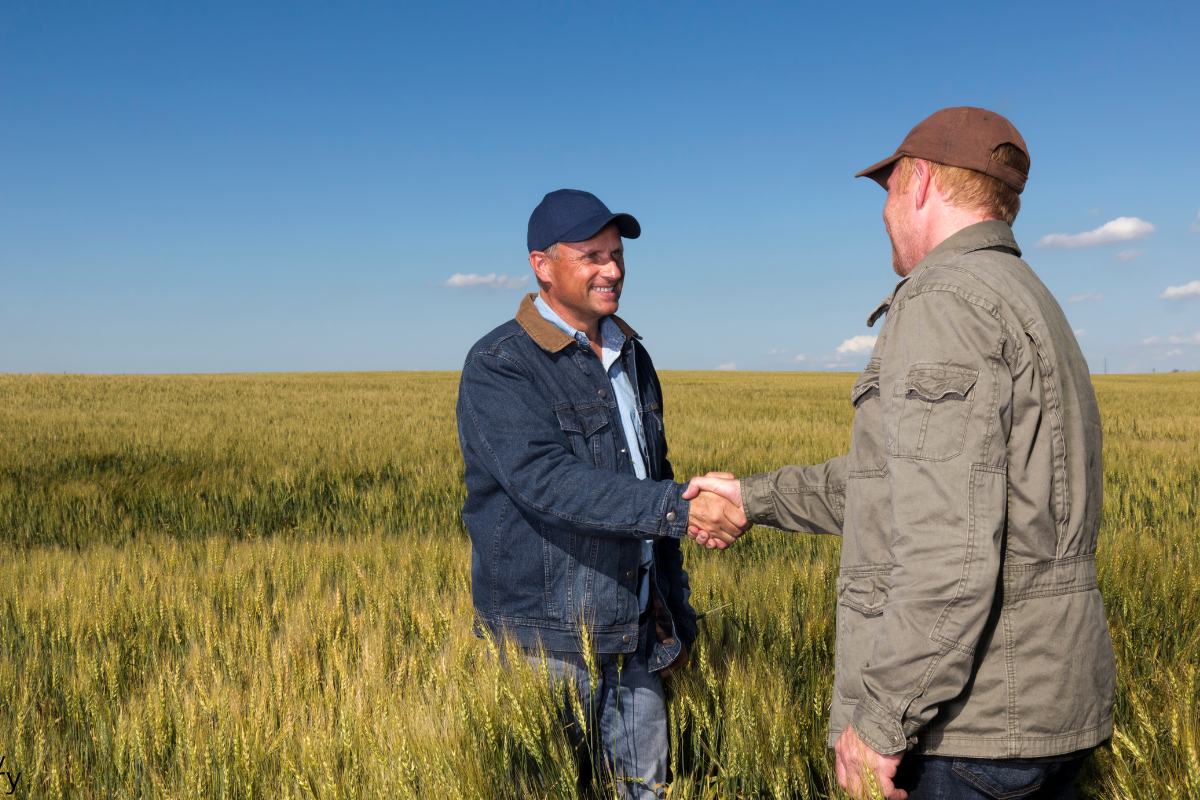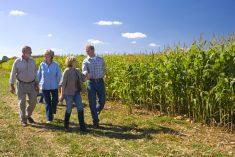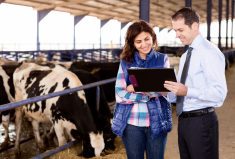It sounds like a dream come true, placing current financial data at the fingertips of everyone involved in the farming enterprise so you can make better, more efficient on-the-spot decisions at critical crunch times. And it might not be a pipe dream any longer.
“It’s just the way the world is working,” says Lance Stockbrugger, a chartered accountant, consultant and farmer cropping 4,000 acres in east-central Saskatchewan. “Having all the required financial data at the fingertips of everyone on the farm who needs it makes capturing better deals and negotiating for grain contracts, parts or equipment easier without the need to always second-guess yourself.”
Read Also

Are you ready for farm succession?
What motivates some farmers to make a succession plan while others don’t seem worried.
Just like in the field, however, it’s one thing to have the data. It can be quite another thing to put that data to its best use. And also like in the field, while it’s true the data can make you a better manager, it won’t happen instantly or all on its own.
- More Country Guide: Editorial: Our farm advisers can do better
Stockbrugger, like any other farmer, knows how the “busy work” on the farm can eat into your time, and it’s no surprise to find that bills, receipts and everything else sits day after day in the office waiting to be entered into the system.
That’s the way it used to be — or, in many cases, the way it still is.
Now, farm apps are emerging that enable the capture of data, receipts, bills and so on, at the time the transaction occurs.
FCC’s real-time app is AgExpert Mobile, says Matthew Van Dijk, senior specialist for management software at Farm Credit Canada. “This smartphone app can capture a picture of receipts in real time and sync back to the home or business desktop computer at the push of a button.”
AgExpert Mobile is the travelling companion to FCC’s flagship farm accounting program AgExpert Analyst, a widely adopted program that has been around for 30-plus years.
Some 2,000 farmers are already using AgExpert Mobile, but FCC says it expects that over time, virtually every smartphone owner who uses AgExpert Analyst will become an AgExpert Mobile user too.
This app, and others like it, takes a photo of the receipt or other document. This (a) captures a copy of the document and stores it in the cloud, prevent- ing that all-too-common occurrence of the “lost” receipt, and (b) then with a few taps or swipes allows the information to be marked as an expense or income and to note the supplier, the type and the amount of the transaction.
“At this time, the taxes have to be assigned at the desktop location,” says Van Dijk. “In future, there will be even more functionality added to the app, but for now, if operators use this type of real-time capture of transactional data, they are giving themselves a huge advantage in terms of knowing the whole story of their financial data.”
Security is an obvious question when an app transmits confidential data. “The app does the data capture, and at a tap from the user, will send its data to the cloud,” says Van Dijk. “The cloud then transmits or sends the data down to the office computer. There is no transmission of data the other way from the home computer to the app.”
Van Dijk says the risks associated with this type of data collection and transmission is far less than, say, credit card data that might be stored on a company server where it can be hacked, as recently happened with The Home Depot in Canada and the U.S.
Van Dijk also says that FCC does not collect or mine any data stored on the app.
“I’m an accountant so it’s hard to shake off my natural caution toward financial data,” says Stockbrugger. “It is important to put some controls on who can enter the data, who can read it or view it.”
Farmers also need to keep in mind the potential benefits of real-time accounting, Stockbrugger says.
With real-time accounting, buying decisions can be made remotely based on, for instance, the most accurate cost of production. This year’s cost of production can also be compared to previous years. “Maybe it’s just me, but I like as much detail as possible,” says Stockbrugger. “Dollars per unit or per acre, not just dollars.
“I still see far too many farmers trying to figure out a cost of production or other details in the supplier’s office,” Stockbrugger says. “If you don’t know this, you can’t figure out where your profits are, or are not. You can’t make an informed decision about what you should be pre-selling before seeding or at harvest and so on. In order to mitigate risk, this is crucial financial information, and real-time financial management tools make it even easier to have this available even in the busy season — which runs from April through to November in many cases.”
Stockbrugger has embraced cloud storage for other aspects of farm management besides just the financial data. “I have all the farm grain contracts stored in the cloud,” says Stockbrugger. “I can be swathing canola and I can look at my canola contracts and make decisions at that moment based on what I’m seeing in the crop I’m harvesting. I can lock in prices and make other decisions right from my smartphone sitting in the swather.”
Stockbrugger and his brother Lane also log their field operations in real time. “We find keeping spray records and other field operation records invaluable,” says Stockbrugger. “One of us can look at a field, or be in the field with an agronomist, and pull up the data and make determinations and decisions right then and there. Talk about a time saver.”
Embracing real-time financial management means having a smartphone and an app to facilitate data recording and syncing with the home office.
How many farmers across Canada actually have a smartphone? “Our latest survey in 2014 showed that 76 per cent of Canadian agriculture producers own a smartphone,” says Van Dijk. “As well, over half own a tablet. Of those producers, 35 per cent use ag-related apps, and a third regularly use banking apps.”
These numbers showed a considerable increase over FCC’s last survey in 2011, when 29 per cent reported having a smartphone and only six per cent a tablet. On top of that startling increase in technology adoption, the survey also demonstrated that Canadian farmers are more willing to try new technologies sooner. In 2011, only 16 per cent of producers felt they would be the first of their peers to try new technology. By 2014 that number had jumped to 26 per cent.
“What this tells FCC, and other businesses that supply farmers, is that their appetite for new technologies is growing,” says Van Dijk. “Farmers are now finding value in new technology and are moving more and more to working with devices and online services.”
















